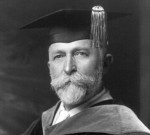![]()
ABSTRACT: The early years of the 20th century were notable for improvements in general sanitation, dairying practices and milk handling. Most infants were breast-fed, often with some formula feeding as well. Availability of the home icebox permitted safe storage of milk and infant formula, and by the 1920s, feeding of orange juice and cod liver oil greatly decreased the incidence of scurvy and rickets. Use of evaporated milk for formula preparation decreased bacterial contamination and curd tension of infant formulas.
From 1930 through the 1960s, breastfeeding declined and cow’s milk and beikost were introduced into the diet at earlier and earlier ages. Although commercially prepared formulas, including iron-fortified formulas replaced home-prepared formulas, few infants were breast-fed or formula fed after 4–6 mo of age. Iron deficiency was prevalent.
From 1970 through 1999, a resurgence of breast-feeding was associated with a prolongation of formula feeding and an increase in usage of iron-fortified formulas. By the end of the century, formula feeding of older infants had largely replaced feeding of fresh cow’s milk and the prevalence of iron deficiency had greatly decreased.
J. Nutr. 131: 409S–420S, 2001. (full text)



